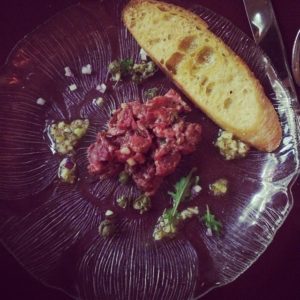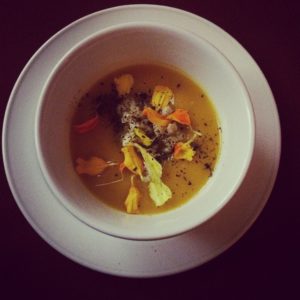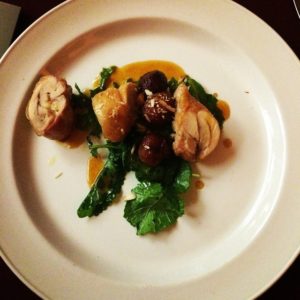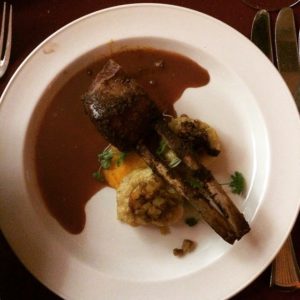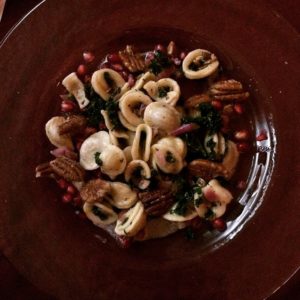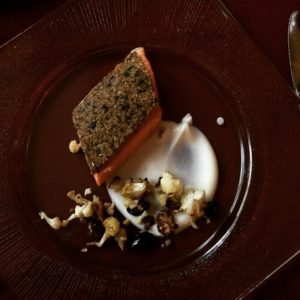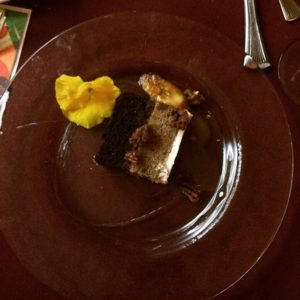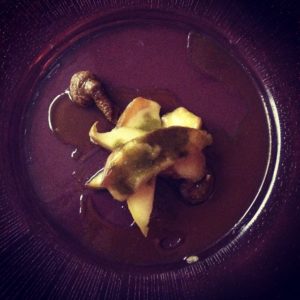This last Tuesday, I had the pleasure of attending the second annual Tu B’Shvat Seder at Beth El. Last year’s event was such a rousing success that this year’s was bound to be even better.
As I said last year, most of us only know Tu B’Shevat as the holiday about the trees. And while that isn’t untrue, this seder and what it represents gives the holiday a new meaning. Now as some of you already know, I’m a food guy. I don’t need excuses to attend food events or to try new foods. With that said, learning something while chowing down on chef-prepared courses and downing glass after glass of delicious wine is a fabulous way to spend a Tuesday night during a snow storm.
The theme of last year’s seder was the seasons. It gave the four participating chefs the flexibility to create courses that helped temporarily remove us from the doldrums of another Minnesota winter. Yet still we had those two winter courses to smack us back to reality. This year’s theme was the 7 species of Israel – the foods mentioned over and over again in the Torah and also very popular in Israel. For those of you keeping score, that’s wheat, barley, grape, fig, olive, pomegranate, and date. But since this seder was about order and symmetry, they threw in honey and an 8th course.
The grapes got double duty as the 8 courses were paired with 8 wines. My tablemates informed me that the pomegranate fad isn’t just at your local Whole Foods – but also in Israel where it is being used to make wine. The consensus at the table was to stick to the grape versions next time I visit the Holy Land.
Before I dive into the food itself, I just want to applaud the four participating chefs – none of whom I believe are Jewish, but all of whom worked their magic in accordance with the theme of the night.
Daniel del Prado from Burch Steak
Anthony Pester from Pescara in Rochester
Thomas Boemer from Corner Table
Dawn Drouillard from Fabulous Catering
Course 1: Wheat (Daniel del Prado): Beef tartare with toast, duck egg, pickled wheat berries, and black mustard seeds
This first course was the perfect start – beef, but light in tartare form. Frankly, I didn’t need the toast – but could have used a handful more of the pickled wheat berries. I am usually not a fan of kosher beef as it tends to dry out when cooked – but obviously, no worries here.
Course 2: Barley (Daniel del Prado): Butternut squash and barley soup with roasted kelp and blue borage
A nice transition from the beer tartare and quite delicious. The barley added a bit of texture to what is normally a homogenous soup.
Course 3: Grapes (Thomas Boemer): Chicken thighs with roasted grapes and thyme
I had to calm down one of my white-meat only tablemates who rolled her eyes at chicken thighs. I offered up that no real chef would serve a chicken breast, so she tried it and of course it was delicious. For me, the chicken was secondary to the roasted grapes – Why aren’t all of us making these all the time?
Course 4: Figs (Dawn Drouillard): Spiced roast rack of lamb with mulled Herzog cabernet sauvignon reduction, petite stuffed potato gnocchi with pecans, figs, rosemary, and candied orange rind garnish
The lamb and reduction were a perfect combo – like the roasted grapes, I really don’t know why I don’t make lamb all of the time. The gnocchi, however, was a bit dry and didn’t add much to the dish. And sadly, the figs seemed to be an afterthought and I honestly don’t remember them at all.
Course 5: Pomegranate (Anthony Pester): Orecchiette with pomegranate, kale chiffonade, candied onion, smoked pecans, and sunflower-lemon vinaigrette
This simple dish was absolutely perfect coming out of the lamb – and the pomegranate was really the star of the show.
Course 6: Olives (Thomas Boemer): Olive-crusted steelhead trout with roasted cauliflower, olives, and almonds
Table 15 wasn’t pleased with the “fishiness” of the trout and I think I know why. The color was too much like salmon and that threw them off. Personally, the olive crust was great and to me, fish should taste like fish.
Course 7: Dates/Honey (Dawn Drouillard): Banana and chocolate layer cake with salted caramel, dates, “buttercream”, and edible flower garnish
So Chef Dawn presented this course with her pastry chef. She lauded this vegan cake and Tipsy Table 15 let out a sigh of perceived disappointment. Now I don’t think I would ever choose a vegan cake over a non-vegan cake. And I can tell you about countless pareve disappointments in my life. But this cake was pretty damn good. If Chef Dawn didn’t announce that it was vegan, you wouldn’t have guessed it. It completely stood on its own and was a hit at the table.
Course 8: Honey (Anthony Pester): Tarragon-braised pear with warm walnut puree and honey-rice vinegar reduction
Coming out of a surprisingly rich vegan cake, this was a fitting end course. I guess I just like cooked fruit because I could have eaten several of these. The walnut puree, while not the most appealing visually speaking, was amazing. We already have peanut, almond, cashew, hazelnut butters, but why not walnut?
Another splendid job by Rabbi Avi Olitzky who like me, truly enjoys good food, good wine, and good company. But I bet he’ll also enjoy the fact that my daughter is mildly obsessed with pomegranates and now I have one of those lovely teachable moments most parents crave.
For those of you foodies out there who have missed the first two, I urge you buy tickets for #3 in 2016 – already in planning I hear.

